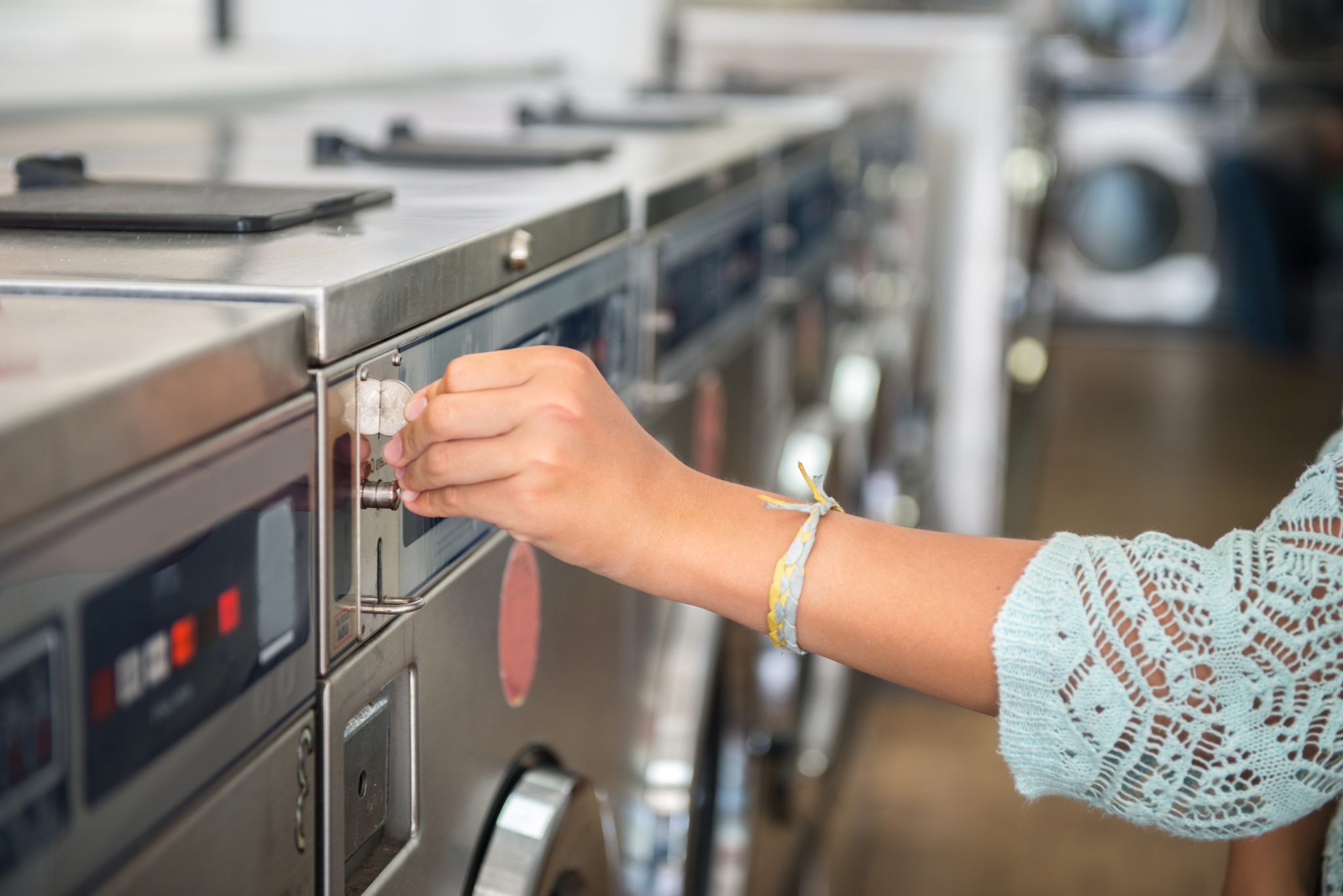The modern laundry industry is undergoing a dramatic transformation fueled by rapid technological advancements, shifting consumer preferences, and heightened competition. Traditionally defined by coin-operated washers and dryers, laundromats and on-premise laundry facilities are now adopting a range of cutting-edge solutions to streamline operations, enhance customer convenience, and maximize profitability. According to the Coin Laundry Association, there are between 29,000 and 35,000 laundromats across the United States, collectively generating an estimated $5 billion in annual gross revenue. Within this large and diverse market, an increasing number of owners are turning to digital payment systems, smart machines with enhanced connectivity, and remote monitoring technologies. Below, we explore how these innovations have evolved over time and what they mean for the future of laundry services.
1. A Brief Historical Perspective
For decades, coin-operated machines were the backbone of self-service laundromats and many on-premise laundry setups. Customers brought in rolls of quarters to operate washers and dryers, while owners relied on routine coin collection and manual audits of machine usage. Though dependable, these cash-based systems limited payment methods to physical currency, lacked real-time data tracking, and offered little insight into peak usage periods or individual machine performance. As broader retail and service industries began embracing credit card readers, POS systems, and loyalty programs in the 1990s and early 2000s, the laundry sector remained somewhat behind due to the perceived reliability and simplicity of coins. Over the past decade, however, advances in point of sale (POS) technology and connectivity have rapidly reshaped laundry operations, making it possible for owners to pivot away from purely mechanical equipment toward integrated digital ecosystems.
2. Innovations in Payment Systems
One of the most visible shifts in laundry technology has been the adoption of flexible, customer-friendly payment options. The rise of cashless and contactless transactions has been particularly pronounced in urban areas, where customers increasingly prefer credit cards, mobile wallets, and prepaid loyalty cards over carrying loose change. In fact, industry surveys suggest that 40% to 60% of laundromats in major metropolitan regions have introduced some type of digital payment mechanism, whether through standalone card readers attached to machines or full-scale POS systems designed specifically for laundry operations.
These modern payment systems bring a host of benefits. First, they simplify the transaction process: customers can start a machine with a quick swipe, tap, or QR code scan, thereby reducing time spent fumbling for coins. Additionally, operators gain immediate access to real-time revenue data, eliminating many of the inefficiencies associated with coin collection and manual auditing. When combined with loyalty programs—where customers earn credits or points for each wash—businesses often see an uptick in repeat visits. According to a 2022 survey of frequent laundromat users, 49% indicated they choose a laundromat based on the availability of loyalty incentives, suggesting that these digital programs significantly influence customer retention and average spend per visit.
3. Emergence of Smart Machines
Alongside improvements in payment systems, “smart” washers and dryers have emerged, changing how both customers and operators engage with laundry equipment. These machines integrate Internet of Things (IoT) technology, enabling them to communicate with central management software. Owners can track various performance metrics—such as cycle counts, water usage, and maintenance needs—in real time, making it easier to schedule preventive repairs before breakdowns occur. Early adoption statistics show that laundromats using connected machines see 10% to 15% fewer unplanned service disruptions, translating into meaningful cost savings and improved customer satisfaction.
Smart washers and dryers also enable advanced cycle customization, from adjusting water temperature and cycle duration to providing specialized settings for different fabric types. As more consumers become aware of sustainability and energy efficiency, these capabilities align with customer values and help operators manage utility expenses more effectively. Moreover, the presence of easily configurable washers and dryers makes it possible for laundromats to offer premium services—such as specialized garment care or eco-friendly washing cycles—which can bolster profit margins. According to a global market analysis of commercial laundry equipment, the market is projected to grow at a CAGR of over 5% through 2027, largely driven by the demand for energy-efficient and connected machines capable of delivering a superior user experience.
4. The Rise of Remote Monitoring Solutions
Perhaps the most transformative development in the laundry sector is the adoption of remote monitoring solutions that provide centralized oversight of all machines and payment processes. Laundromat and facility owners can now use cloud-based dashboards or mobile apps to view machine status, track revenue, and receive alerts for issues ranging from payment errors to mechanical malfunctions. This level of visibility significantly reduces operational inefficiencies, especially for multi-store owners who previously had to rely on physical checks or employee updates at each location.
For instance, some platforms allow an owner to remotely activate or deactivate a machine if a customer accidentally selects the wrong cycle or if there’s a system error. Maintenance staff can be dispatched proactively when an alert indicates a fault, rather than waiting until the machine goes offline and customer complaints start piling up. This continuous flow of real-time data enables data-driven decision-making, whether that means adjusting machine prices during peak hours to balance demand, or identifying patterns that signal a need for machine replacements. Reports from technology providers indicate that laundromats leveraging such remote monitoring capabilities can see a 15% to 20% reduction in labor costs, primarily by streamlining staff allocation and preventing unnecessary downtime.
5. Operational Efficiencies and Value-Added Services
The integration of advanced payment systems, smart machines, and remote monitoring solutions also opens the door to value-added services that were once cumbersome to manage. Wash-and-fold offerings, for example, can be seamlessly handled through a modern POS interface that tracks each order from drop-off to pickup. This system eliminates manual record-keeping and the risks of misplaced garments, while also providing opportunities for upselling or cross-promotions (e.g., special discounts on large laundry loads, or subscription-style memberships for frequent customers).
Additionally, laundromats equipped with cutting-edge technology are better positioned to experiment with pickup and delivery services, using digital order management and route optimization tools to serve a broader market. As lifestyles become increasingly fast-paced, these concierge-style services have shown growing popularity, particularly in dense urban centers. Some estimates suggest that wash-and-fold and pickup/delivery services can account for as much as 25% of total revenue for forward-thinking laundromats, underscoring the revenue potential of integrated, tech-forward operations.
6. Challenges and Considerations
While the adoption of modern laundry technology offers numerous benefits, it is not without challenges. The initial capital investment in smart machines, updated POS systems, and comprehensive remote monitoring software can be substantial. Moreover, staff training is critical to ensure that employees can troubleshoot basic system errors, guide customers through new payment interfaces, and leverage data analytics tools. Owners must also account for cybersecurity risks; ensuring that payment systems and customer data remain protected against breaches is essential for maintaining consumer trust. Additionally, older, coin-only customers may be hesitant to embrace digital transactions, prompting many operators to maintain a hybrid model—offering both coins and cashless options—during the transition period.
7. Looking Ahead: The Future of Laundry Technology
As with many retail and service sectors, laundry technology is evolving at a pace that suggests an even more connected and automated future. Expect to see further integration of artificial intelligence and predictive analytics, enabling equipment to learn usage patterns and autonomously optimize cycles for energy efficiency and performance. Machine learning could also help identify subtle signs of mechanical wear, triggering predictive maintenance long before a critical failure occurs. Meanwhile, mobile apps and contactless solutions are poised to dominate customer-facing interfaces, fostering a frictionless experience where patrons can reserve machines, track cycle progress, and pay from their smartphones.
Indeed, analysts predict that by 2027, up to 70% of laundromats in metropolitan areas will have adopted integrated digital ecosystems that facilitate advanced payment options, remote monitoring, and the seamless management of multiple revenue streams. For owners, the key to remaining competitive in this rapidly transforming landscape lies in adopting the right blend of technology, staff training, and customer-centric offerings. Embracing new payment platforms, smart machine features, and remote monitoring solutions can help reduce operational costs, increase revenue, and deliver a better experience for customers. As these innovations continue to refine the industry, laundromats that adapt will be well positioned for sustained success in a world where convenience, efficiency, and data-driven insights are increasingly essential to winning and retaining customers.








